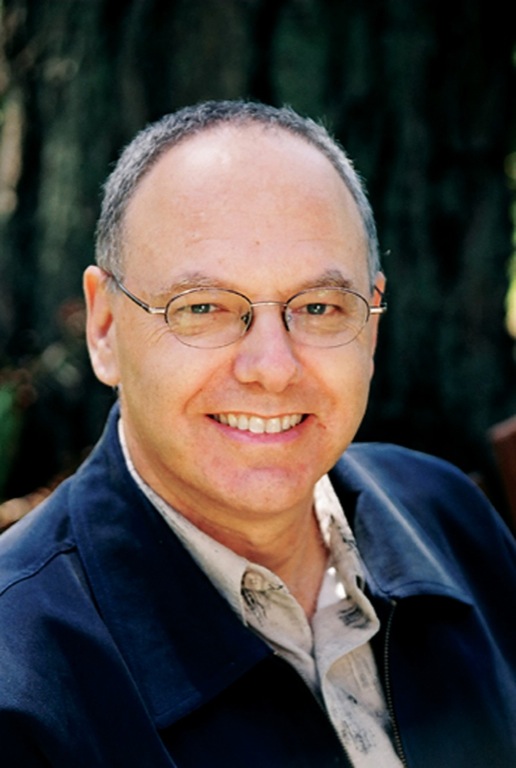Healthy Living Through Mindfulness
Open gallery

When he was a novice monk, Donald Altman remembers sitting cross-legged on a low futon, swathed in saffron-colored robes. As he contemplated his vows, he became distracted by a giant-sized Cadbury milk chocolate bar that was sitting on a nearby shelf.
“I could swear it was smiling at me,” he says.
He glanced at his monk roommates. One was lying prone, eyes closed.
The other was sitting in a perfect lotus position, methodically clicking prayer beads. Mindfully, Altman conquered temptation by noticing his emotional thoughts and cravings and then letting them go by focusing on the breath.
“I never met a box of cookies I didn’t like,” says Altman. “I knew I’d have to face my food issues when I entered the monastery.”
For most of his life, Altman had been an emotional eater; he had buried uncomfortable feelings like loneliness or boredom with food.
Yet he had managed to build a career as a successful writer. He wrote for The Magic Door, an Emmy Award−winning children’s television show produced by CBS Chicago, and for publications like the Los Angeles Times, New Age Journal, and Independent Business Magazine. He worked on numerous documentary films and corporate videos before cocreating the first interactive comic strip for America Online.
But he became disillusioned, and a nagging discontent led him to pursue a spiritual path. In the late 1990s, Altman spent four months at a Burmese monastery in California’s San Bernadino Mountains—about 50 miles from Los Angeles. “In that tradition, you don’t have to take lifetime vows,” he says. “The experience changed my life and the direction of my work.”
Upon leaving the monastery, Altman wrote Art of the Inner Meal, a book that explores the sacred side of eating and the role of food in religious traditions around the world.
He also designed and conducted workshops across the country for people interested in examining eating as a spiritual path. “In my workshops, I saw people struggling with eating disorders, people with severe symptoms that were life threatening,” he says. “I didn’t know how to work with them.”
Altman sought further training at Lewis & Clark’s Graduate School of Education and Counseling. He earned a master’s degree in counseling psychology in 2004.
After graduating, he spent three and a half years as a senior mental health therapist at the Providence/St. Vincent Eating Clinic. In 2005, he opened West Linn Counseling, a private therapy practice. Altman specializes in helping people with depression, anxiety, fear, and eating disorders. Using the framework of mindfulness, he teaches strategies that help people overcome suffering, create healthy relationships to food and weight, and rewire their brains for happiness.
“Neuroscience studies of the Dalai Lama have shown that meditation and loving-kindness practices cool down the inner reactive core of the brain,” he says. “People become less reactive and more open, optimistic, encouraging, and enthusiastic.” He believes that focus and awareness, being centered and fully awake, are keys to participating in life in the present moment.
Altman continues to write books—including The Mindfulness Code, Living Kindness, and One-Minute Mindfulness—to teach people strategies that foster joyful living.
He’s also a teacher. As an adjunct professor at Lewis & Clark’s graduate school, he teaches a class titled The Contemplative Dimension in Education and Counseling. He also offers classes and training workshops through his websites Mindful Practices and One-Minute Mindfulness.
“Helping people find a sense of peace and calm in life is rewarding,” he says. “I enjoy seeing them overcome fears and anxieties, finding balance and participating fully in life.”
Altman takes his own advice. When he isn’t doing the work he loves, he turns his attention to another of his passions—motorcycle riding along the Oregon coast. Moment by moment, he feels the vibration of the bike and hears the sound of rushing wind as he makes conscious driving adjustments for a safe ride.
“Motorcycle riding,” he says, “is mindfulness training on wheels.”
—by Pattie Pace
More L&C Magazine Stories
Lewis & Clark Magazine is located in McAfee on the Undergraduate Campus.
MSC: 19
email magazine@lclark.edu
voice 503-768-7970
fax 503-768-7969
The L&C Magazine staff welcomes letters and emails from readers about topics covered in the magazine. Correspondence must include your name and location and may be edited.
Lewis & Clark Magazine
Lewis & Clark
615 S. Palatine Hill Road MSC 19
Portland OR 97219

